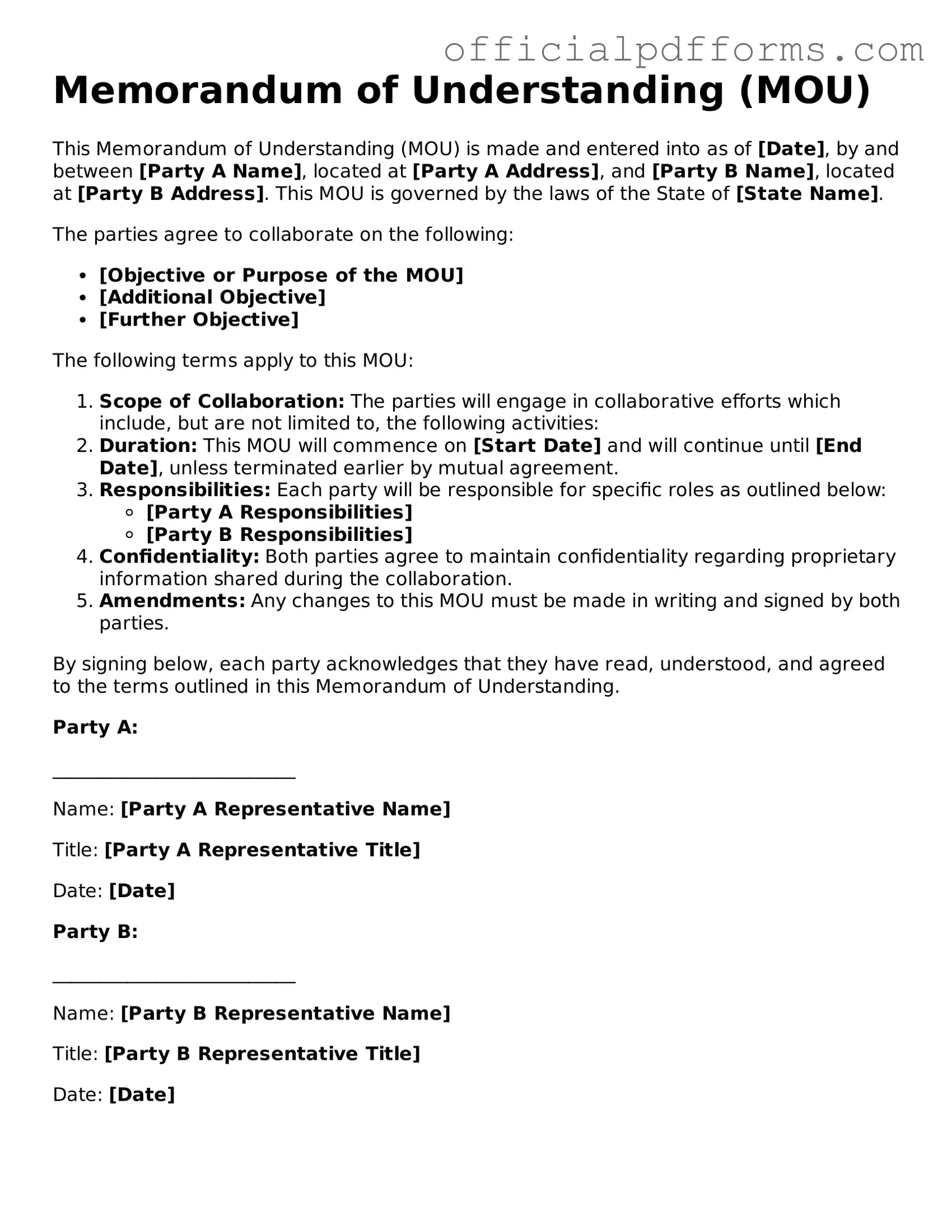What is a Memorandum of Understanding (MOU)?
A Memorandum of Understanding (MOU) is a formal agreement between two or more parties. It outlines the intentions and expectations of each party regarding a specific project or collaboration. While it is not legally binding like a contract, an MOU serves as a useful tool for clarifying roles, responsibilities, and objectives.
When should I use an MOU?
An MOU is appropriate in various situations, including:
-
When parties want to establish a clear understanding of their partnership.
-
Before entering into a legally binding contract, to outline preliminary agreements.
-
For collaborations that do not require formal contracts but still need documentation.
-
In situations where parties seek to ensure transparency and accountability.
What are the key components of an MOU?
An effective MOU typically includes the following elements:
-
The names and contact information of the parties involved.
-
A clear statement of purpose or objective.
-
Details about the roles and responsibilities of each party.
-
A timeline for the project or collaboration.
-
Any financial arrangements or resource commitments.
-
Confidentiality clauses, if necessary.
-
A termination clause outlining how the MOU can be ended.
Is an MOU legally binding?
Generally, an MOU is not legally binding. However, certain provisions within the MOU may create enforceable obligations if they meet the criteria of a contract. It is essential to clarify the intent of the parties in the document to avoid misunderstandings regarding its binding nature.
How do I create an MOU?
Creating an MOU involves several steps:
-
Identify the parties involved and their objectives.
-
Draft the document, ensuring clarity and specificity in each section.
-
Review the draft with all parties to ensure agreement on the terms.
-
Make any necessary revisions based on feedback.
-
Have all parties sign the final version to formalize the agreement.
Can an MOU be amended?
Yes, an MOU can be amended if all parties agree to the changes. It is advisable to document any amendments in writing and have all parties sign the revised MOU. This ensures that everyone is on the same page and helps prevent future disputes.
What happens if one party does not follow the MOU?
Since an MOU is generally not legally binding, there may be limited recourse if one party fails to adhere to its terms. However, the parties may still seek to resolve the issue through negotiation or mediation. Maintaining open communication can often help address concerns before they escalate.
Can an MOU be used in international agreements?
Yes, MOUs are commonly used in international agreements as a way to outline cooperation between parties from different countries. They can help establish a framework for collaboration, even when formal contracts may not be feasible due to varying legal systems. However, it is essential to consider the legal implications in each jurisdiction involved.
How long does an MOU last?
The duration of an MOU can vary based on the agreement between the parties. Some MOUs may specify a set term, while others may remain in effect until a particular project is completed or until one party decides to terminate it. It is important to clearly outline the duration within the document to avoid confusion.
